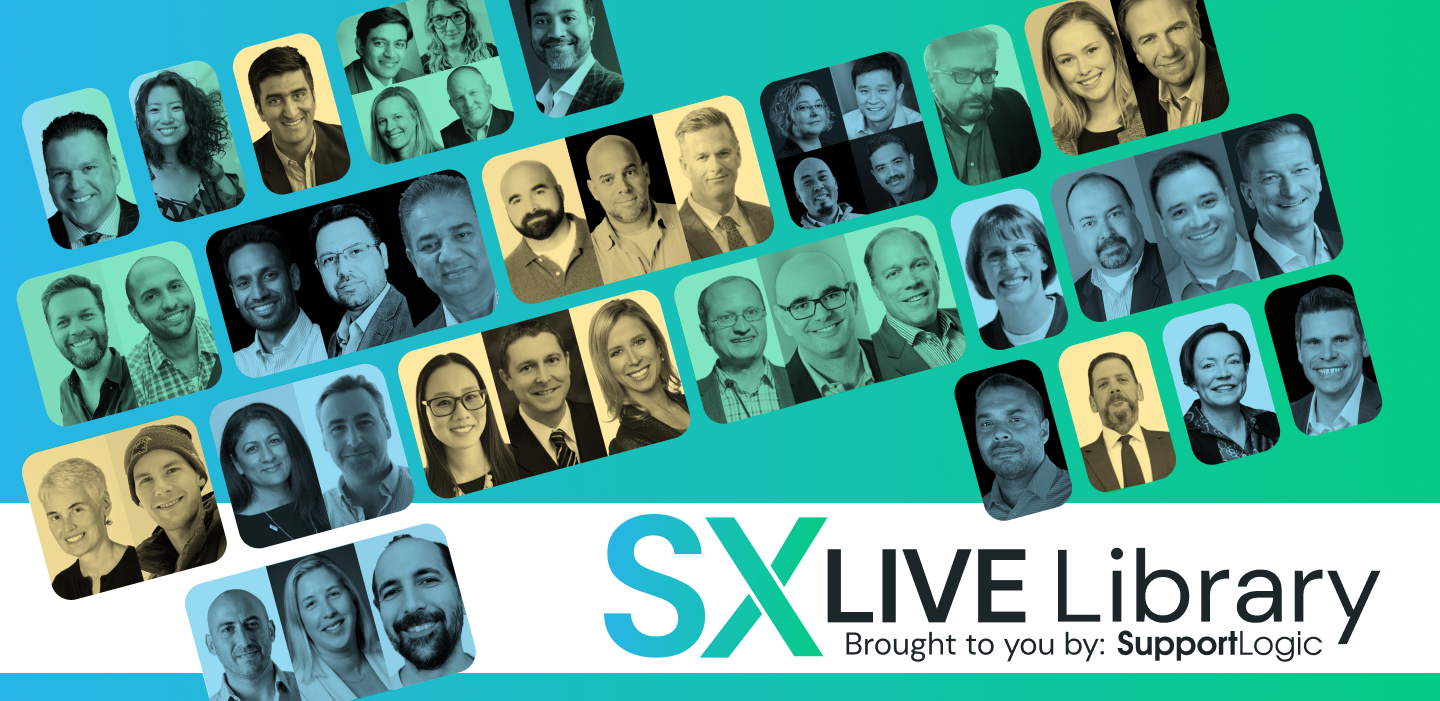
Sep 18, 2023
The Ripple Effect: Employee Satisfaction’s Impact on Customer Experience
employee experiencecustomer experienceSX Live
A 2021 survey from leading market intelligence provider IDC found that 85% of respondents agreed that “an improved employee experience and higher employee engagement translate to a better customer experience, higher customer satisfaction, and higher revenues for their organization.” These results send a clear message: the heart of a business’s success lies in its people.
Motivated and engaged employees are the driving force behind a business’s success, ensuring every customer interaction is not just transactional but transformational. That’s what Mohammed Ajouz, SVP and Global Head of Product Support at SAP, and Alice Petrovich, Head of the Executive Office of Product Support at SAP, explored in a session at this year’s SX Live, “The Power of Satisfied Employees: Unleashing Happy Customers, Retention, and Loyalty.”
You can’t drive greater customer satisfaction and loyalty without a team that’s invested in the success of your business. That’s why your organization needs to start by empowering your employees with proven strategies that start from the ground up. Today, we’ll share Ajouz and Petrovich’s proven strategies for empowering employees to drive customer loyalty so you can transform your own employee and customer experiences.
The relationship between employee engagement and customer experience
In 2019, Glassdoor found that for every one-star improvement in a company’s Glassdoor rating, there’s a corresponding 1.3-point surge in customer satisfaction scores. This impact is especially pronounced in sectors where employees and customers interact closely.
Imagine a support agent, the frontline warrior, interacting with a customer. Their mood, motivation, and overall job satisfaction play a pivotal role in that interaction. An engaged and content employee is more likely to provide a solution-oriented, positive interaction, leading to a satisfied customer. “A happier workforce is associated with a company’s ability to deliver better customer service,” Ajouz says.
Employees who feel valued, recognized, and involved bring their best selves to work. They become brand ambassadors, ensuring that every customer interaction is excellent. And they come up with innovative ideas that can become integral to a business’s success.
One powerful example is how Anjali Sud transformed Vimeo from a struggling video-streaming platform to a successful SaaS company that generated nearly $84 million in Q4 of 2020 alone. After joining the company as director of marketing in 2014, Sud observed that Vimeo was much more popular with small businesses rather than its target market of filmmakers and professional video creators, which she learned by interacting directly with customers.
Then-CEO Joey Levin gave Sud a small team to test the viability of her idea. Within one year, they launched Vimeo Business, a one-stop shop for businesses to create and distribute videos online. By 2017, Sud was appointed CEO, leading Vimeo to be listed as a public company in May 2021.
Empowering employees, as seen with Anjali Sud at Vimeo, can lead to transformative business strategies and products. By fostering trust and acting on employee insights, organizations can unlock innovation that boosts customer satisfaction and company profitability.
3 strategies for improving the employee experience for more satisfied and loyal customers
The following strategies, rooted in trust, innovation, and technology, offer a roadmap for managers to elevate their support teams, ensuring that every customer interaction is efficient, impactful and memorable.
1. Cultivate trust in leadership
“Ideally, the person that an employee trusts the most within their organization is their direct manager because that person has the biggest impact on their workload, on their day, on the culture of the team,” says Petrovich. But how do businesses cultivate this trust?
Start with transparent communication. Regular feedback sessions, where employees can voice their concerns and ideas, are crucial. But it’s not enough just to listen to them—leaders must also act on their feedback.
As Ajouz explains, it’s vital for the C-suite to “take feedback to heart, bring it back to senior leadership, figure out a solution, then ask managers if it’s working or if it could be better.” This proactive approach ensures that employees feel valued and heard, which encourages a culture of trust and collaboration.
A shining example of this in action is SAP’s monthly “exchange on change” meetings with team leaders. These sessions, designed to discuss hot topics and gather feedback, have improved team cohesion and trust.
The ripple effect? Managers become catalysts and champion a culture of trust, authenticity, and openness. This unlocks employee potential while ensuring every customer interaction is infused with genuine care and excellence. After all, when employees trust their leaders, they’re more likely to go above and beyond for their team and customers.
2. Encourage innovation across all teams
When employees get the green light to think outside the box, it often leads to groundbreaking solutions that resonate with customers. As the saying goes, necessity is the mother of invention, and who better to identify those necessities than your frontline employees who interact with your products and customers daily?
To create a culture of innovation, you need to launch initiatives where employees can voice their ideas without fear of judgment. Imagine a system where teams identify the top challenges facing the organization. Employees then brainstorm solutions and prototype their ideas; the most promising ones are developed into proofs of concept. This approach encourages creativity and helps the best ideas rise to the top.
One example of this innovation came from SAP’s corporate culture of continuous innovation. Their commitment to nurturing ideas led to the development of several groundbreaking solutions. Their internal Integrated Support Environment, which originated from the insights of support engineers, clinched the prestigious Operational Excellence Hasso Plattner Award in 2022.
This accolade is a clear testament to the magic that can happen when businesses prioritize innovation and trust in their teams’ potential.
3. Leverage technology to reduce employee effort
Many organizations have shifted away from traditional KPIs like NPS and CSAT to focus on a more telling indicator of customer satisfaction: customer effort. Rather than trying to improve the customer experience using vague satisfaction metrics, support teams can reduce customer effort, which offers a more direct path to more satisfied and loyal customers.
But reducing customer effort starts with your employees. When employees exert less effort on repetitive tasks, they can channel their energy into creating superior customer experiences. This is where emerging technology like AI, chatbots, and integrated platforms come in. These solutions automate mundane tasks, streamline processes, and, in essence, make life easier for employees.
The ripple effect is profound:
- Employees work more efficiently, leading to increased productivity.
- Enhanced job satisfaction and engagement emerge from reduced manual drudgery.
- Happy employees mean happy customers, creating a virtuous cycle of positive experiences.
Invest in your employees to create better customer experiences
An empowered and engaged workforce doesn’t just lead to higher productivity; it directly translates to enhanced customer satisfaction and loyalty.
That’s why the key to a memorable customer experience starts from within—by investing in and prioritizing the well-being and growth of employees. Employees who feel like leadership values their feedback and experience naturally become more invested in the company’s success. A nurtured and motivated team is more likely to innovate and go the extra mile, ensuring that customers don’t just receive a service but an experience that resonates and builds lasting loyalty.
To learn more about the impact of employee satisfaction on customer retention and loyalty, watch Mohammed Ajouz and Alice Petrovich’s presentation from SX Live.
Don’t miss out
Want the latest B2B Support, AI and ML blogs delivered straight to your inbox?




